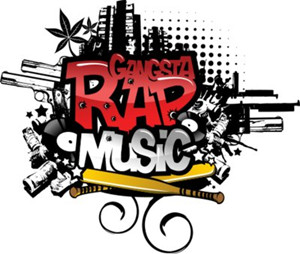
INTRO: Rap — the music of an African American culture known as hip-hop — has gained world popularity as a form of personal and social expression. Now, for the first time, the American music industry has given its top honors to a hip-hop artist. Singer Lauryn Hill won five Grammy awards Wednesday night, including the Album of the Year award. Today our Wordmasters, Avi Arditti and Rosanne Skirble, look at the language of rap, with help from a rapper here in Washington.
TAPE: CUT ONE — "WORDMASTER"/PRIEST DA NOMAD
AA: That's me. And that's Priest Da Nomad, showing his talent for improvisation that's making him a rising name in hip-hop.
RS: This twenty-six-year-old nomad is a journeyman "MC" — master of ceremonies. He's been rapping since he was twelve. He used to annoy his teachers by tapping out rhythms on his desk.
TAPE: CUT TWO — PRIEST DA NOMAD/AA
"To rap is basically just to speak, but it's to speak rhythmically. You notice when you talk anyway, you kind of define a rhythm, but we don't really notice it. So it's really consciously doing it, and it's just using your brain, which is a muscle. It's like everything you do, it's like going to the gym with your brain."
AA: "And you have to keep working out and working out and getting stronger."
PRIEST DA NOMAD: "And there's different aspects of rapping. The one I specialize in is improvisational rhyming, which is called freestyling."
RS: Just give Priest a word — in this case the word we gave him was "word" — and he'll think up a rhyme.
TAPE: CUT THREE — "WORD" RAP
AA: His skill comes from practice, but also from speech training and working with others to master the art of freestyling.
TAPE: CUT FOUR — PRIEST DA NOMAD
"We used to take speech exercises like doing debates, doing alliterations, going through alphabets, doing story telling and environmental rhyming, which is just picking things out in the environment and rhyming about them and just practicing like that. I read the newspaper every day. I try to feed my brain with as much data as possible, and then you practice drawing upon that data in a split second."
RS: Priest says the success of hip-hop stars like Lauryn Hill shows that rap lyrics don't have to be violent or vulgar. But in the music industry, he says, record companies know that this so-called "gangsta" rap sells.
TAPE: CUT five — PRIEST DA NOMAD/RS
PRIEST DA NOMAD: "Certain artists and certain types of music are pushed because it's kind of talking about a certain lifestyle, and popular America — white America — is fascinated by that lifestyle."
RS: "How different are you from the twelve-year-old who was pounding on his desk in junior high?"
PRIEST DA NOMAD: "Well, I've grown and matured. I still have the same passion, though. My whole thing with what I do is when I feel something and when something moves me, I can't ignore it, and everyone from, like teachers and parents — my mother used to tell me, 'why are you doing this?' She laughed at it at first because, she was like, 'OK, it's a phase he's going through.' And then after high school — we were dealing with some record companies but before we could do a deal, one of them folded — I went to school for a little bit, to college, and came back and got pulled back into music. Once I got back into it, I was like, this is where my heart is and I'm not ever stopping."
MUSIC: "We Got"
AA: Priest Da Nomad performs mostly in clubs in the Washington area and has a self-released CD which includes this party song called "We Got."
RS: And we've got a final call for our Wordmaster Name the Next Decade Contest. The deadline is Tuesday.
AA: With Rosanne Skirble, I'm Avi Arditti.
词汇点津:
今天的《词汇大师》请来了美国的说唱演员Priest Da Nomad,让他向我们来讲一讲关于rap的故事。
说唱(Rap)是一个黑人俚语中的词语,相当于“谈话”(talking),产自纽约贫困黑人聚居区。它以在机械的节奏声的背景下,快速地诉说一连串押韵的诗句为特征。这种形式来源之一是过去电台节目主持人在介绍唱片时所用的一种快速的、押韵的行话性的语言。
Priest认为,rap其实就是说话talk,只不过加上了节奏rhythm。
如何才能成为一名合格的rap歌手呢?这需要坚持不懈的努力,“We used to take speech exercises like doing debates, doing alliterations, going through alphabets, doing story telling and environmental rhyming.”
还需要武装自己的头脑,“You have to try to feed your brain with as much data as possible, and then you practice drawing upon that data in a split second.”












